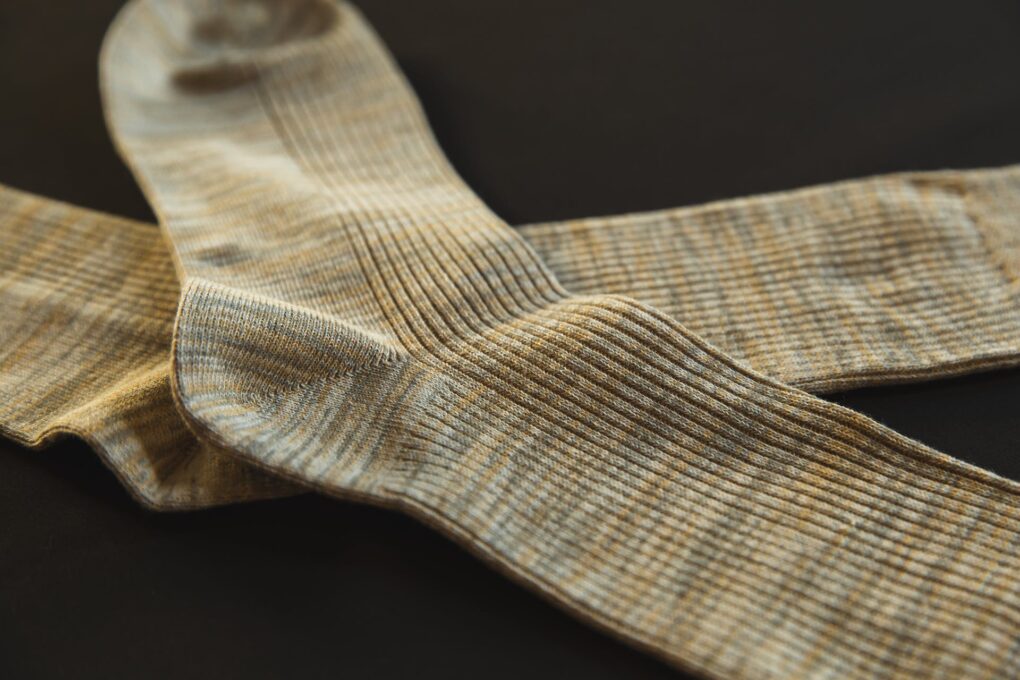As the fashion landscape evolves, embracing eco-friendly sourcing practices becomes paramount. Here’s a detailed exploration of sustainable materials in sock production and strategies for choosing suppliers dedicated to environmentally friendly practices.
- Sustainable Material Options:
Dive into the world of eco-friendly materials suitable for sock production. Explore innovations in sustainable fibers like organic cotton, bamboo, and recycled materials. Highlight the benefits of these materials, such as reduced environmental impact and ethical sourcing. - Supplier Selection Criteria:
Outline key criteria for selecting suppliers committed to eco-friendly practices. Emphasize the importance of assessing a supplier’s certifications, ethical labor practices, and overall commitment to environmental sustainability. Provide insights into the impact of these choices on the entire supply chain. - Navigating Eco-Friendly Challenges:
Acknowledge the challenges in adopting sustainable practices and offer solutions. Discuss potential obstacles, such as cost implications and limited material options, and provide practical advice on overcoming these challenges. Highlight success stories of businesses embracing sustainability.
Remember, the shift towards eco-friendly sourcing not only aligns with global environmental concerns but also caters to a growing consumer base that values sustainability.
Embracing green packaging solutions is a crucial step in minimizing environmental impact. Let’s delve into the realm of eco-conscious packaging strategies, exploring ways to implement sustainable practices and effectively communicate these efforts to environmentally conscious consumers.
- Eco-Conscious Packaging Strategies:
Explore innovative packaging materials and design approaches that align with sustainability goals. Discuss alternatives like biodegradable, compostable, or recycled packaging. Highlight the importance of reducing plastic usage and opting for materials that contribute to a circular economy. - Implementation and Adoption:
Provide practical guidance on implementing green packaging solutions within the supply chain. Discuss collaboration with packaging suppliers specializing in eco-friendly options and address challenges associated with the transition. Share success stories of businesses successfully adopting sustainable packaging practices. - Communicating Sustainability to Consumers:
Outline effective communication strategies to convey your commitment to sustainability. Discuss the significance of transparent labeling and eco-certifications. Explore the use of storytelling in marketing materials to engage consumers emotionally and showcase the positive impact of their eco-conscious choices.
By integrating green packaging into your business practices, not only do you contribute to environmental preservation, but you also tap into a growing market of consumers who prioritize sustainable and eco-friendly products.

Navigating the landscape of ethical manufacturing partnerships is pivotal for businesses committed to social responsibility. Let’s explore key facets of establishing alliances with manufacturers that prioritize ethical practices, ensuring fair labor conditions and responsible production.
- Selecting Ethical Manufacturing Partners:
Delve into the criteria for identifying manufacturing partners with a strong commitment to ethical practices. Discuss considerations such as fair wages, workplace safety, and adherence to international labor standards. Highlight the importance of conducting thorough audits and due diligence to ensure alignment with your ethical values. - Ensuring Fair Labor Conditions:
Explore strategies for guaranteeing fair labor conditions within manufacturing facilities. Address the significance of fair wages, reasonable working hours, and the prohibition of child labor. Discuss the role of certifications and industry standards in verifying and maintaining ethical labor practices, fostering transparency throughout the supply chain. - Promoting Responsible Production:
Shed light on the concept of responsible production and its impact on sustainability. Discuss practices that minimize environmental harm, such as waste reduction, energy efficiency, and eco-friendly material sourcing. Illustrate the positive outcomes of integrating responsible production into the manufacturing process, emphasizing the benefits for both the environment and the brand’s reputation.
By forging ethical manufacturing partnerships, businesses not only contribute to the well-being of workers and the planet but also align themselves with the values of an increasingly conscious consumer base.
Empowering consumers with knowledge about sustainability in the context of their sock choices is a vital step toward fostering a more eco-conscious shopping culture. Let’s delve into key strategies for consumer education on sustainability.
- Environmental Impact Awareness:
Begin by shedding light on the environmental consequences of sock production and consumption. Illustrate the lifecycle of socks, emphasizing resource-intensive stages such as material extraction, manufacturing, and disposal. Presenting facts and statistics can effectively communicate the ecological footprint associated with conventional sock choices. - Highlighting Sustainable Alternatives:
Educate consumers about sustainable sock options and the positive impact of choosing eco-friendly materials. Showcase the benefits of materials like organic cotton, bamboo, or recycled fibers. Provide insights into how opting for these alternatives contributes to resource conservation, reduced pollution, and a more circular economy. Consider creating a guide that helps consumers make informed choices aligned with sustainability. - Promoting Sustainable Shopping Habits:
Encourage sustainable shopping behaviors by offering tips and guidance. Emphasize the importance of quality over quantity, advocating for a shift away from fast fashion. Suggest practices like repairing socks instead of discarding them and exploring second-hand or ethically produced options. Illustrate how small changes in consumer behavior can collectively contribute to a more sustainable and responsible fashion industry.
By arming consumers with knowledge and practical tips, businesses play a crucial role in fostering a sustainability mindset. This approach not only benefits the environment but also establishes a positive brand image among consumers seeking ethical and eco-friendly choices.

Crafting effective green marketing strategies is pivotal in communicating your commitment to sustainability and resonating with eco-conscious consumers. Let’s explore three key approaches to seamlessly integrate sustainability into your marketing campaigns.
- Authentic Storytelling:
Engage consumers by sharing the authentic story behind your sustainable sock collection. Highlight the journey from sourcing eco-friendly materials to ethical manufacturing practices. Use compelling narratives to convey the positive impact of each purchase on the environment and communities. Authentic storytelling fosters a connection with consumers who seek transparency and sincerity in the brands they support. - Visual Emphasis on Eco-Friendly Features:
Leverage visual elements in your marketing materials to emphasize the eco-friendly features of your sock collection. Showcase the sustainable materials used, eco-conscious packaging solutions, and any certifications or partnerships that validate your commitment to the environment. Incorporate imagery that communicates a sense of responsibility and aligns with the values of eco-conscious consumers. - Educational Content on Sustainability:
Integrate educational content into your marketing strategy to inform consumers about the broader context of sustainability. Create blog posts, infographics, or videos that delve into the environmental impact of the fashion industry and the positive change achievable through sustainable choices. Position your brand as an advocate for conscious consumerism, providing valuable insights that empower customers to make environmentally responsible decisions.
By weaving sustainability into your marketing narrative, you not only attract eco-conscious consumers but also contribute to the larger movement toward a greener and more sustainable fashion industry. This approach aligns your brand with values that resonate with a growing segment of socially and environmentally aware consumers.







